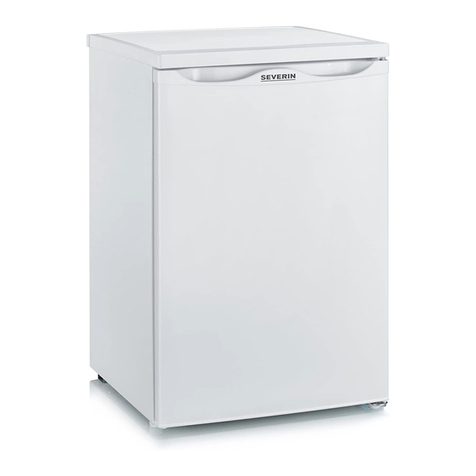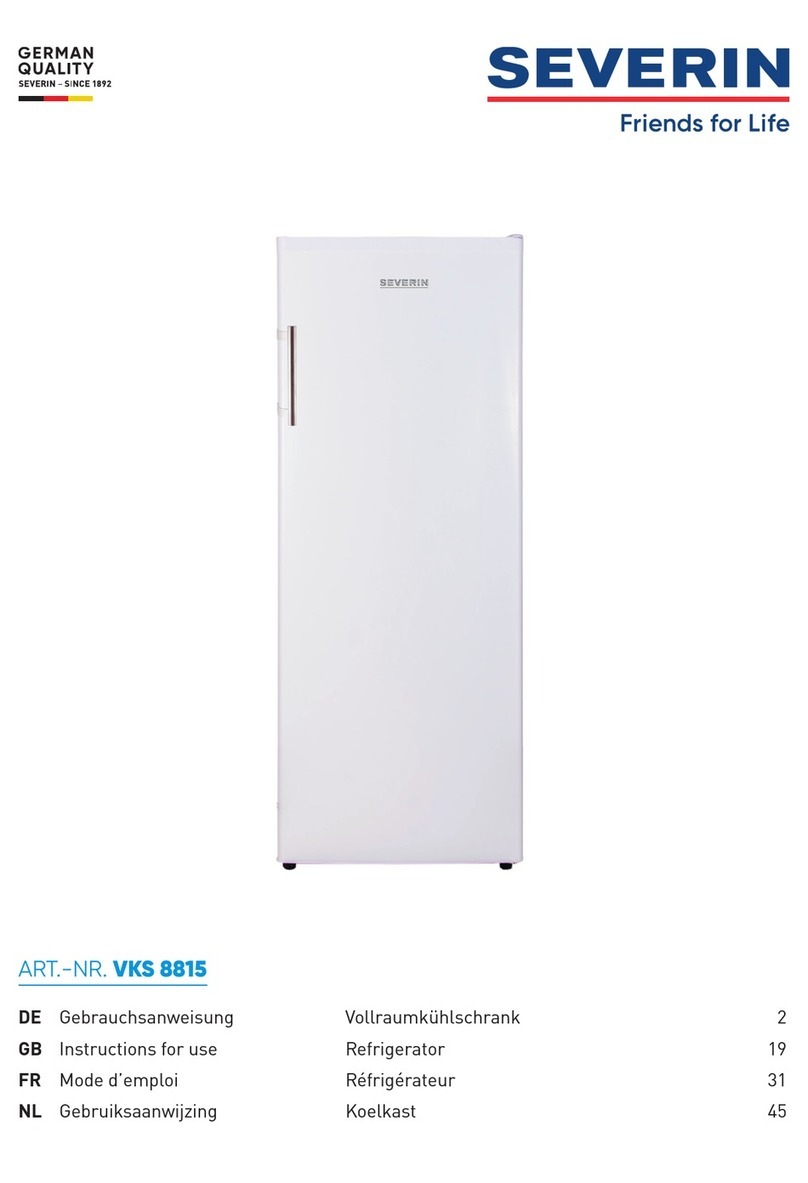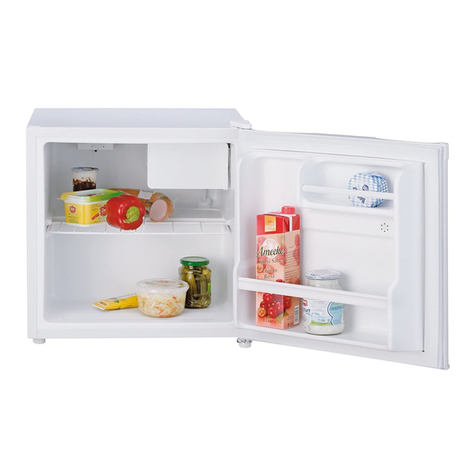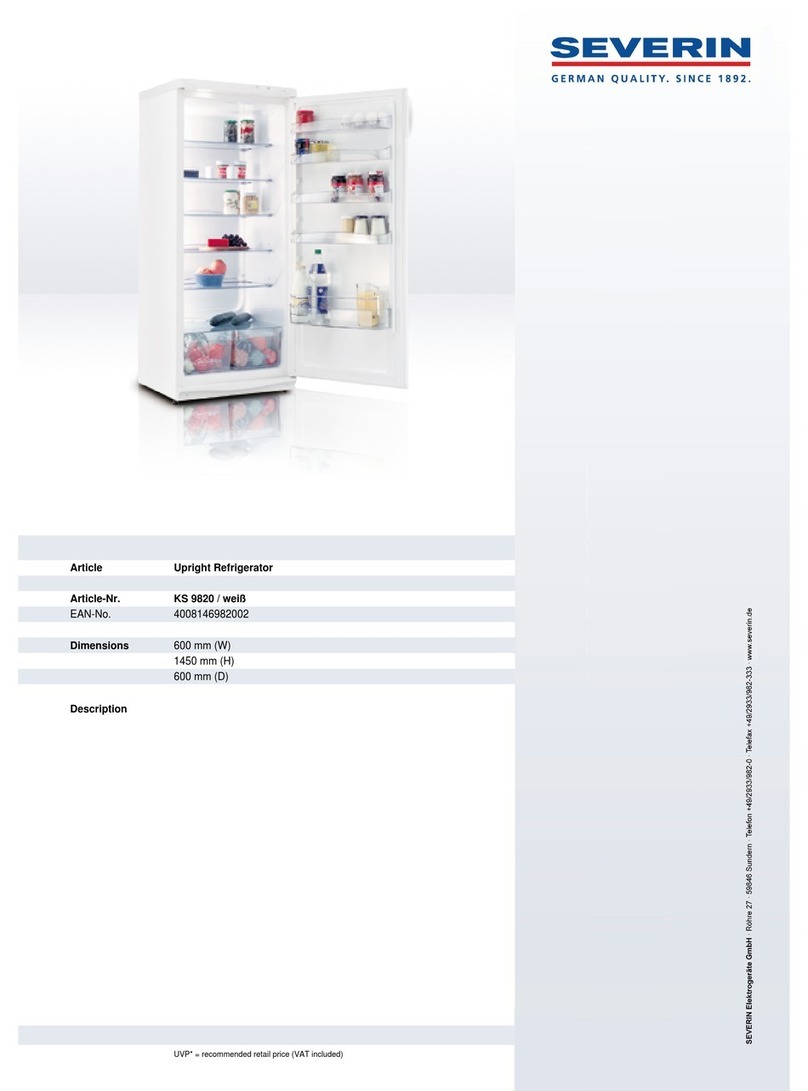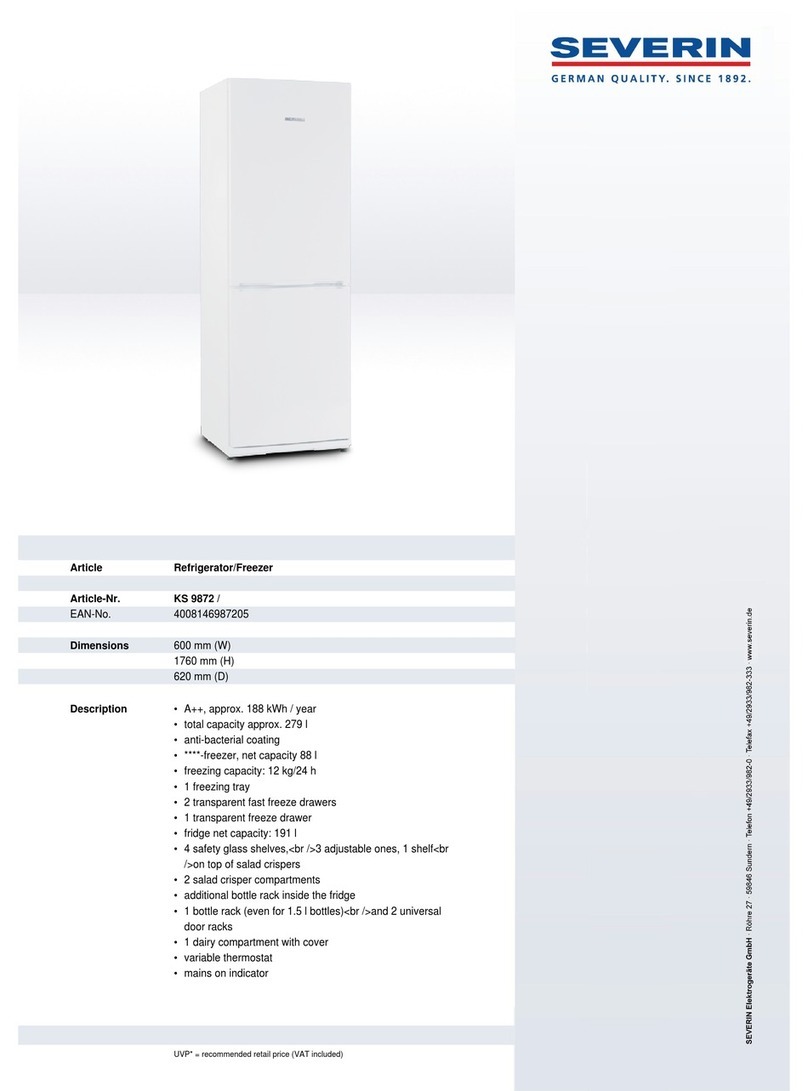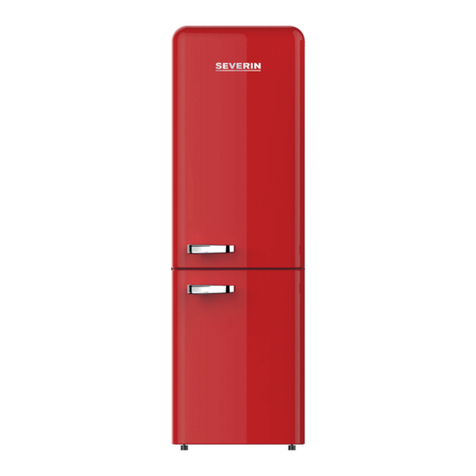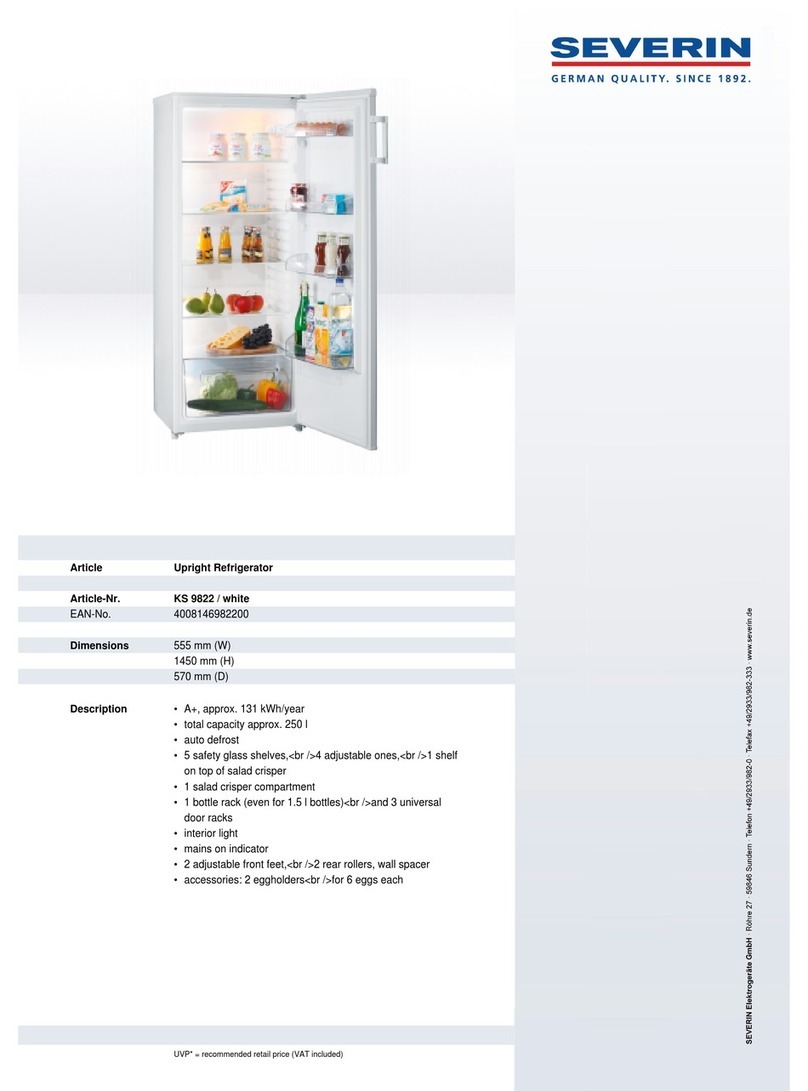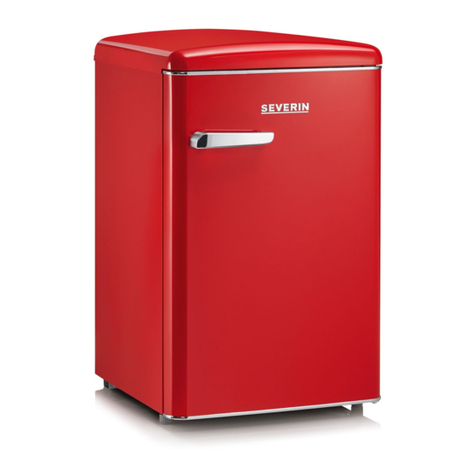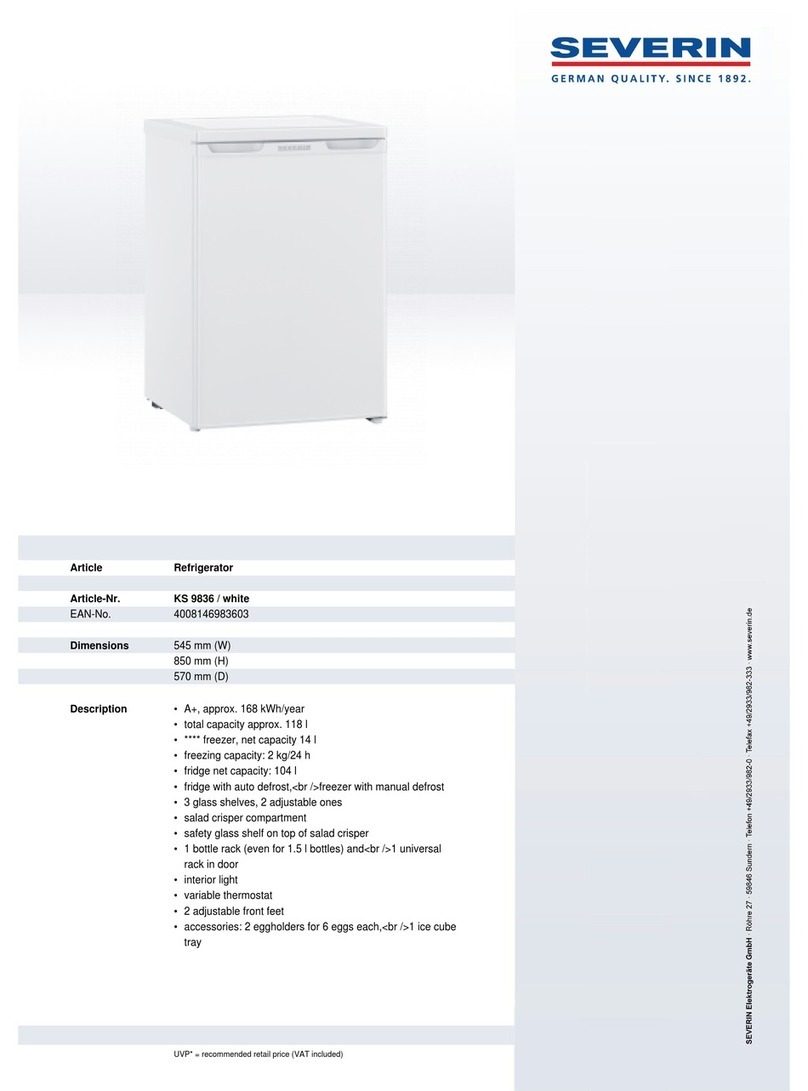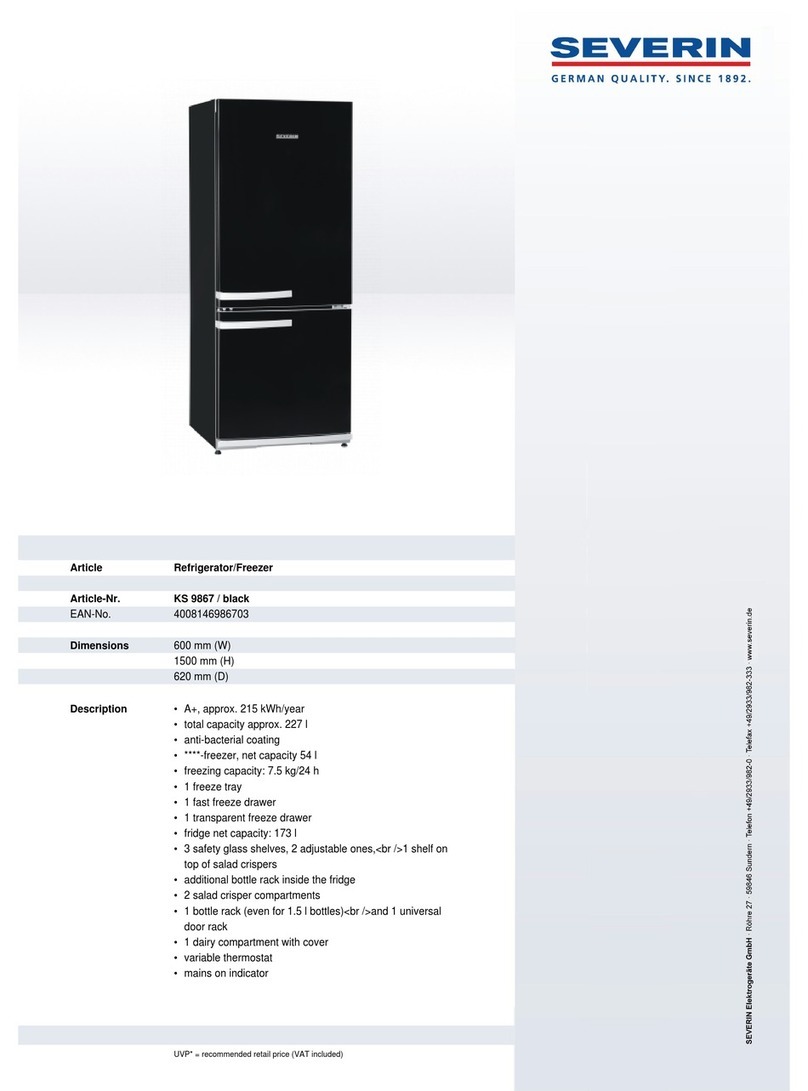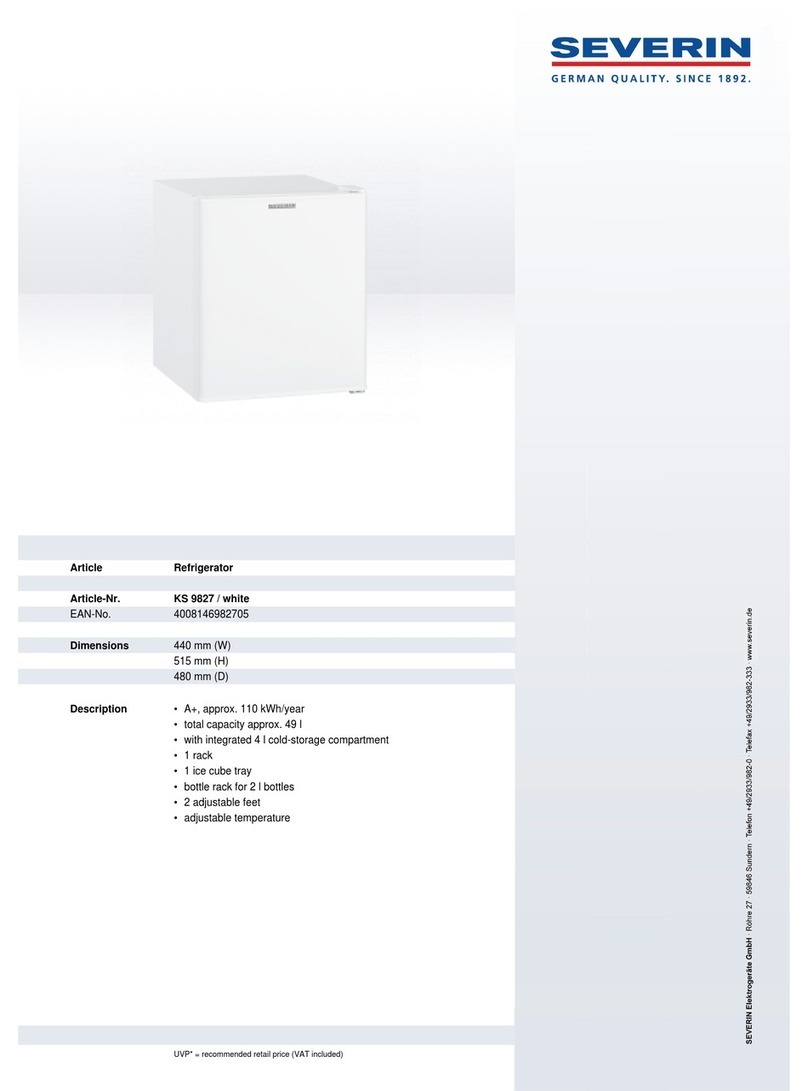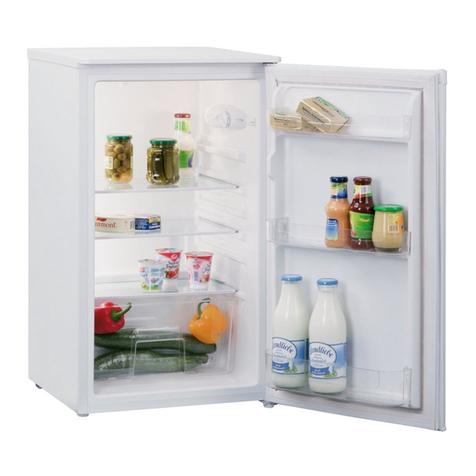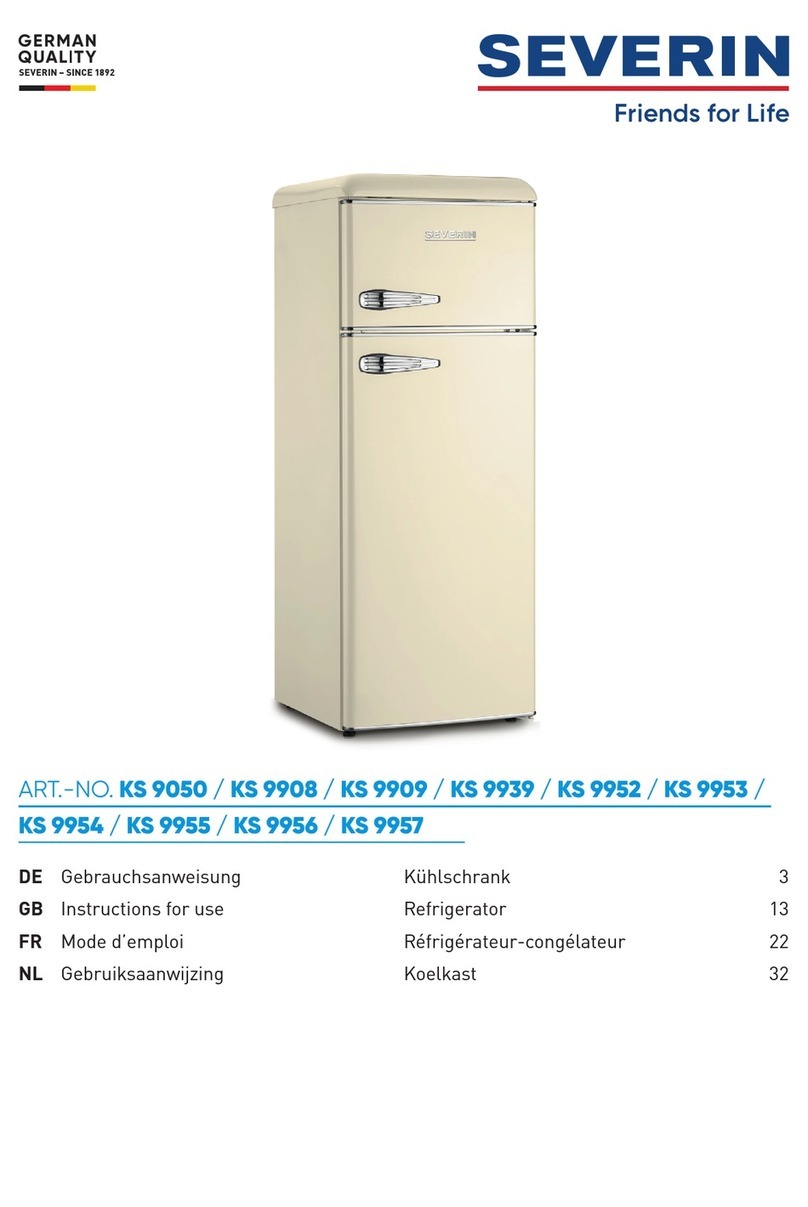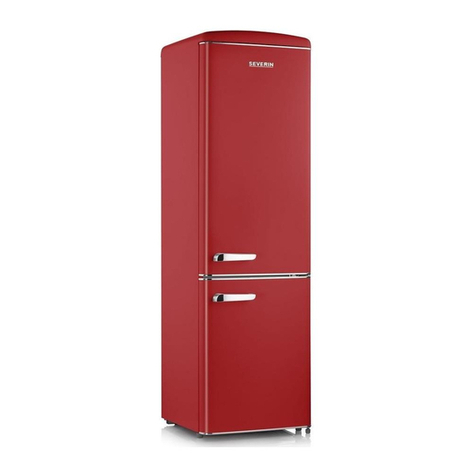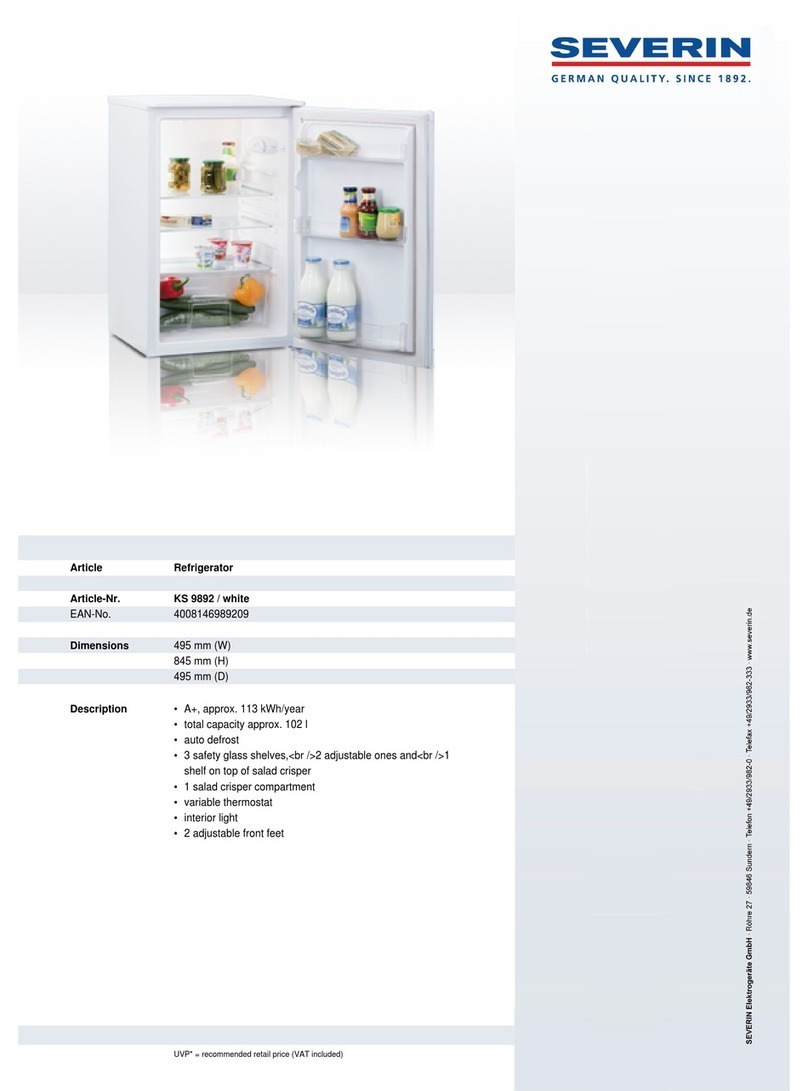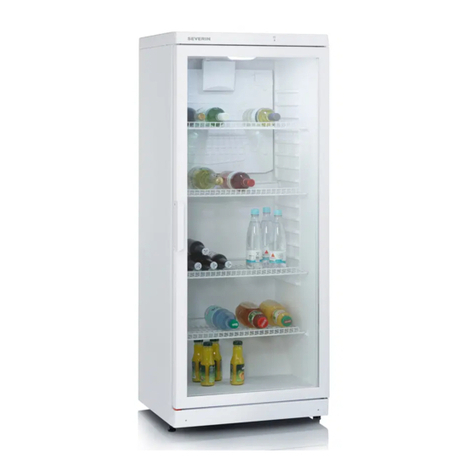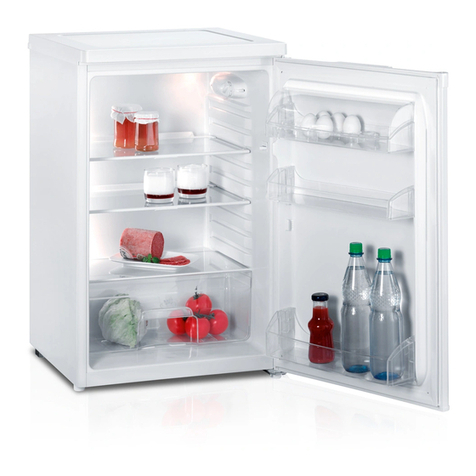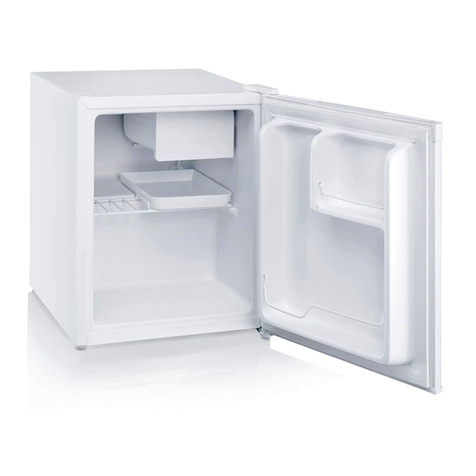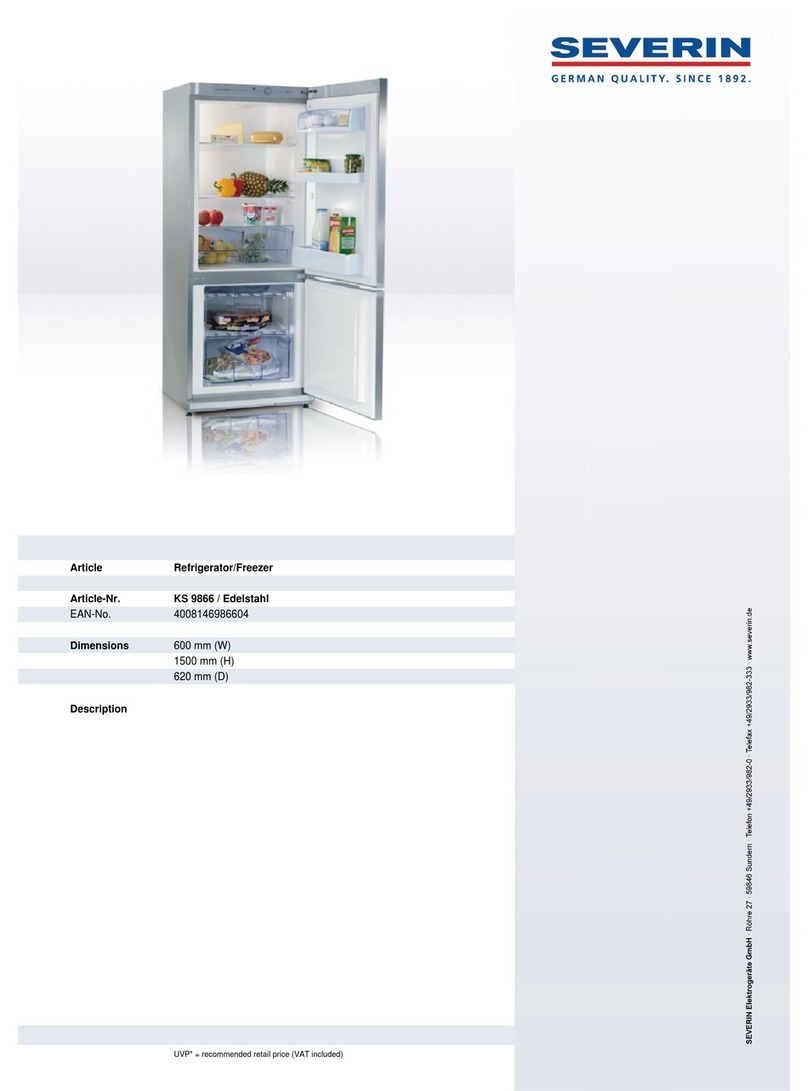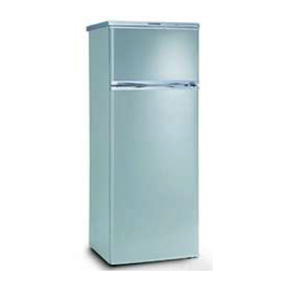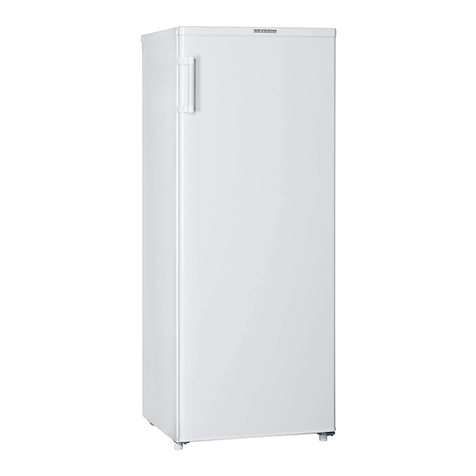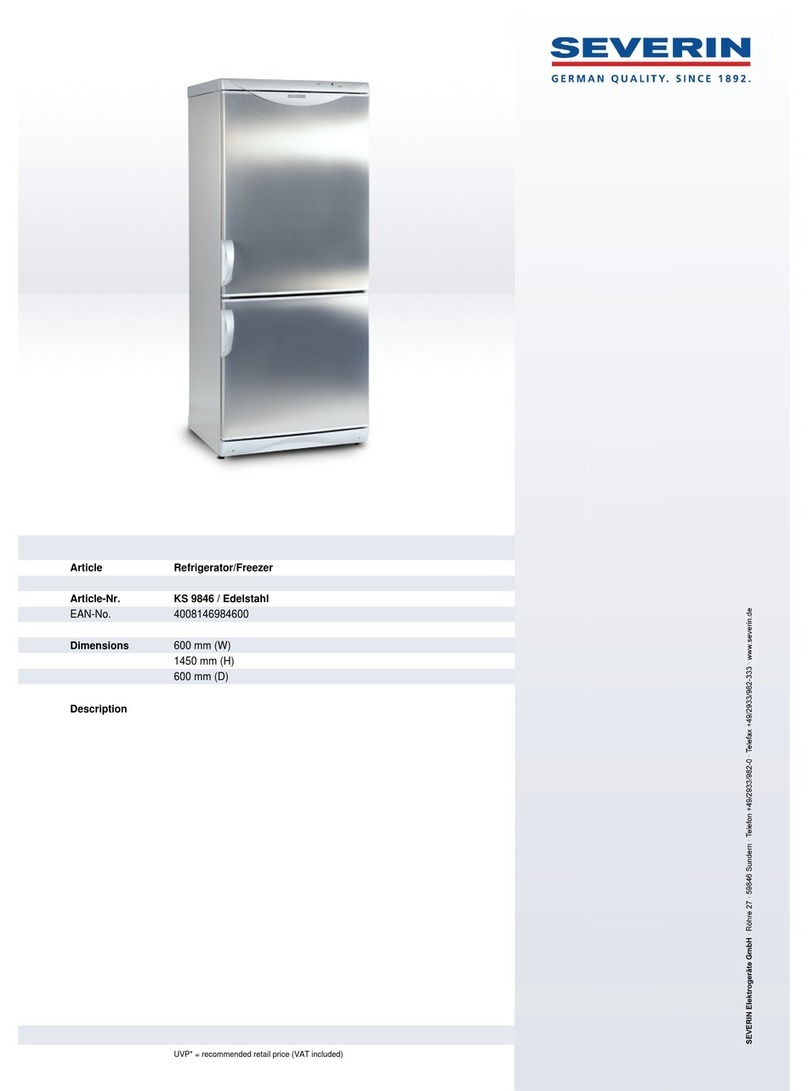power. In the case that there is an open fire or any other sources of ignition in the vicinity of the
refrigerant gas, make sure it is removed immediately from this area and that the room is then
thoroughly ventilated.
Warning: Do not damage the cooling circuit. Any escaping refrigerant causes damage to the
eyes; there is also a danger of the gas igniting.
Warning: Keep ventilation openings, in the appliance enclosure or in the built-in structure,
clear of obstruction. Sufficient ventilation must be ensured at all times.
Warning: Do not use any external device (e.g.; heaters or heating fans) to accelerate de-frosting;
follow only the methods recommended in this manual.
The ice removed from the unit during de-frosting is not suitable for human consumption.
Warning: Do not operate any electrical appliances (e.g. ice makers) inside the storage
compartment that are not specifically permitted in these instructions.
Before it is connected to the mains power, the unit must be thoroughly checked for transport
damage, including its power cord. In the event of any such damage being found, the appliance
must not be connected to the mains.
The power cord should be regularly examined for any signs of damage. In the event of such
damage being found, the appliance must no longer be used.
To avoid the risk of fire, do not place any thermo-electric appliances on top of the unit. Do not
place liquid containers on top of the unit, to prevent any leaking or escaping liquid damaging the
electrical insulation.
This unit is designed for storing food only.
Alcoholic substances may be stored only in properly sealed containers and in upright positions.
This appliance is not designed for the storage of explosive substances such as aerosol cans with a
flammable propellant.
To avoid the risk of food poisoning, do not consume food after its storage time has expired.
Thawed foods must not be frozen a second time.
Do not lean or put undue weight on the shelves, compartments, door etc.
Protect the inside of the refrigerator at all times from open flames and any other sources of
ignition.
Remove the plug from the wall socket
-in case of any malfunction,
-before de-frosting,
-during cleaning,
-before maintenance or repair work is carried out.
When removing the plug from the wall socket, never pull on the power cord; always grip the
plug itself.
In order to comply with safety regulations and to avoid hazards, any repairs or modifications to
this unit must be carried out by our authorised service personnel, including the replacement of
the power cord.
We reserve the right to introduce technical modifications.
If the unit is not used for an extended period of time, we recommend keeping the door open.
If the unit is sold, handed over to a third party or disposed of at a suitable recycling facility,
attention must be drawn to the presence of the insulation agent ‘cyclopenthane’ as well as to the
refrigerant R600a.
Familiarisation
The components of your refrigerator-freezer unit may differ in quantity and design from those
described here. This description refers to a unit of the group of two-compartment refrigerator-
freezer combinations.
16
